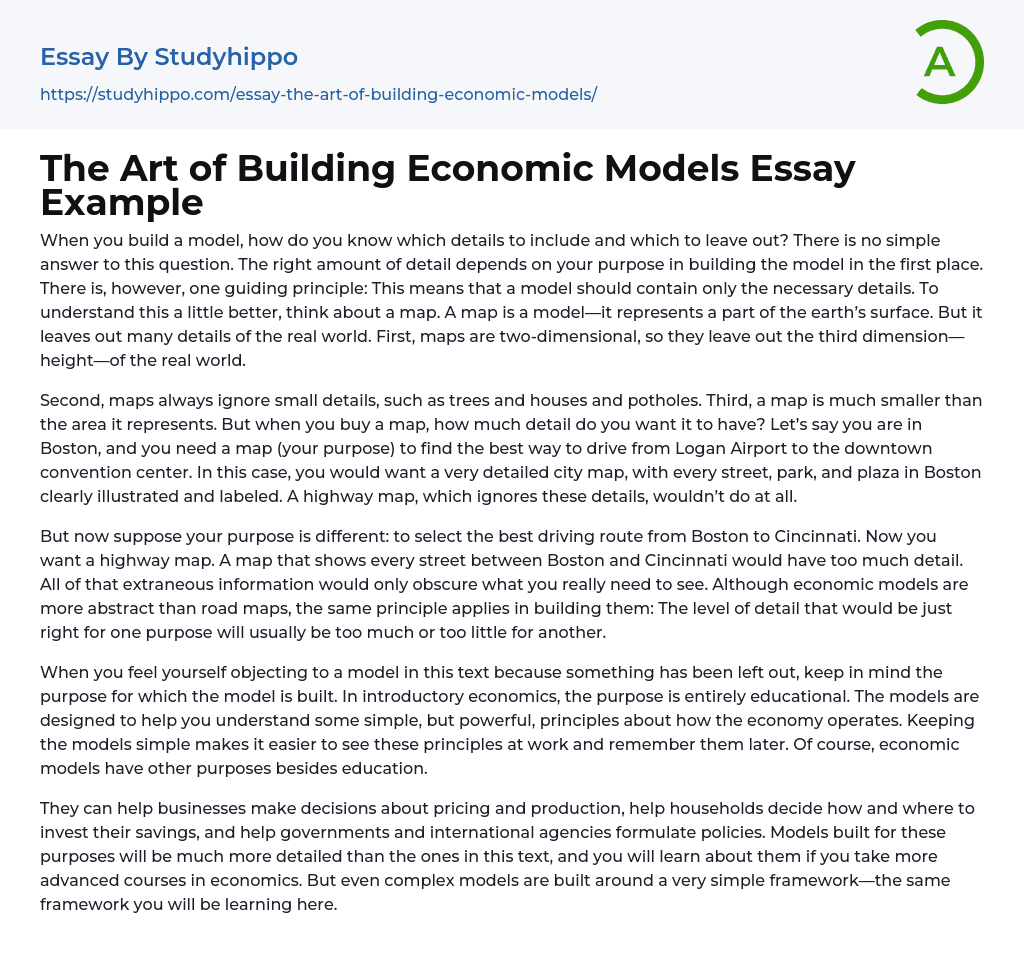When creating a model, determining which details to include and exclude can be challenging. The level of detail necessary in a model depends on its purpose. However, there is a guiding principle to follow: a model must contain only the essential details. To illustrate this concept, consider a map. A map is a model that represents a portion of the earth's surface, yet it omits numerous real-world details. For instance, maps are two-dimensional and do not incorporate the third dimension of height.
In addition, maps overlook smaller features like trees, houses, and potholes. Moreover, maps have a much smaller scale compared to the actual area they represent. However, when purchasing a map for a specific purpose, such as finding the optimal route from Logan Airport to the downtown convention center in Boston, a highly detailed city map is
...necessary. This detailed map should accurately depict and label every street, park, and plaza in Boston. Conversely, a highway map that disregards these specific details would not be suitable for this purpose.
Suppose you have a different goal, which is to find the optimal driving route from Boston to Cincinnati. In this case, you would require a highway map that displays only the necessary streets. Including every street between Boston and Cincinnati would be excessive and would hinder the clarity of the map. This same principle applies to economic models, which are more conceptual than road maps. The appropriate level of detail for one purpose will typically be either excessive or insufficient for another.
The purpose of the models presented in this text, specifically in introductory economics, is purely educational. These model
aim to enhance your understanding of the fundamental principles that drive the economy. By keeping the models simple, it enables a clearer observation of these principles and aids in their retention. It is crucial to remember that economic models serve other purposes beyond education as well.
The use of models in economics is beneficial for businesses, households, governments, and international agencies. These models assist in determining pricing and production decisions for businesses, guiding investment choices for households, and formulating policies for governments and international agencies. Although more detailed models are developed for these purposes, this learning module focuses on the basic framework used in all models, which will be further explored in advanced economics courses.
- Finance essays
- International Business essays
- Macroeconomics essays
- Barriers To Entry essays
- Microeconomics essays
- Pricing essays
- Profit essays
- Consumerism essays
- Export essays
- Free Trade essays
- International Trade essays
- Compensation essays
- Monopoly essays
- Trade essays
- Industry essays
- Warehouse essays
- Economic Development essays
- Economic Growth essays
- Inflation essays
- Taxation essays
- Central Bank essays
- Monetary Policy essays
- Economy essays
- Gross Domestic Product essays
- Recession essays
- Capitalism essays
- Economic System essays
- Materialism essays
- World economy essays
- American Dream essays
- resources essays
- Max Weber essays
- Employment essays
- Minimum Wage essays
- Unemployment essays
- Human Development essays
- Income Inequality essays
- Economic Inequality essays
- Money essays
- Financial Accounting essays
- Market Segmentation essays
- Supply And Demand essays
- Purchasing essays
- Forecasting essays
- Legacy essays
- Bank essays
- Corporate Finance essays
- Financial News essays
- Financial Ratios essays
- Financial Services essays




